Contents
TogglePackaging Industry: Changes and Opportunities for MSMEs & Startups
The scope of the packaging market in India is promising, presenting lucrative opportunities for businesses across various sectors.
In India, this sector has witnessed significant growth in recent years, driven by factors such as rising consumerism, urbanization, e-commerce boom, and a growing middle class. In this blog we, you will get understand what growth potential, the packing industry holds, what is sustainable packaging along with various options available under sustainable packaging and some data points related to sustainable packaging on a global scale.
Packaging is the fifth largest sector in India and is one of the highest growth sectors in the country. According to the Packaging Industry Association of India (PIAI), the sector is growing at CAGR 22% to 25%.
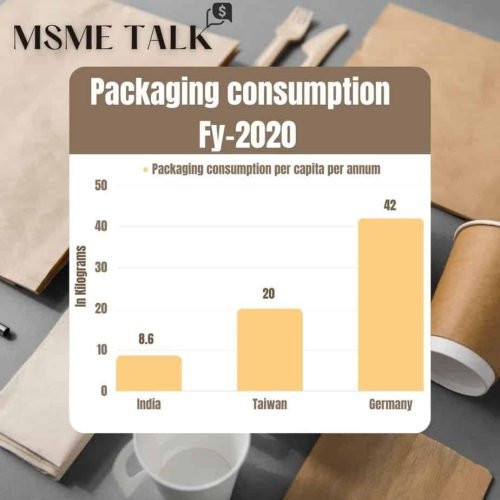
According to the Indian Institute of Packaging (IIP), the packaging consumption in India has increased 200% in the past decade, rising from 4.3 kg per person per annum (pppa) to 8.6 kg pppa as on FY20.
MSMEs in the packaging industry often drive innovation and the adoption of sustainable practices. They are more agile and responsive to market demands, making it easier for them to experiment with new materials, designs, and eco-friendly packaging options. Many MSMEs lead the way in developing biodegradable, compostable, or recyclable packaging alternatives.
This industry is focusing on packaging that not only protects the product but also enhances its visual appeal to capture consumer attention. This trend is expected to drive the growth of SMEs in packaging industry.
Globally, the packaging industry sector has positioned itself as one of the fastest growing industry across all countries. The industry is worth over $ 917 billion (in 2019), growing at CAGR 2.8% to reach to $ 1.05 trillion by 2024.
Why is there growth potential in the Packaging industry?
Certainly! The scope of MSMEs (Micro, Small, and Medium Enterprises) in the packaging industry is vast and promising. Let us understand the growth potential under this sector:
Rapidly Expanding Consumer Goods Sector: India’s consumer goods sector has been expanding at an impressive rate, fueled by increasing disposable incomes and changing lifestyles. This growth has created a significant demand for innovative and attractive packaging solutions.
(MSME TALK podcast available across all major platforms like Apple Podcast, Spotify, Google Podcast,Gaana Podcast, Amazon Podcast, Jio Saavan)
E-commerce Revolution: The rapid growth of e-commerce has revolutionized the way goods are packaged and delivered. With more consumers embracing online shopping, the need for secure and efficient packaging solutions has soared.
As e-commerce continues to expand, the packaging market will witness a substantial boost.The growth of individual end user segments of food, beverages, FMCG and pharmaceuticals will trickle down into rising demand of packaging solutions.
Growing Food and Beverage Sector: India’s food and beverage industry is experiencing remarkable growth, driven by factors such as changing dietary patterns, urbanization, and a rise in the number of quick-service restaurants.
As a result, there is a rising demand for packaging solutions that extend the shelf life of food products, maintain their quality, and provide convenient options for on-the-go consumption. The packaging market stands to benefit significantly from this flourishing sector.
Pharmaceutical Packaging: The pharmaceutical industry in India is expanding rapidly, driven by factors such as increasing healthcare awareness, a growing elderly population, and the rising prevalence of chronic diseases.
Effective packaging is critical in ensuring the safety, stability, and integrity of pharmaceutical products. As the healthcare sector continues to thrive, the demand for reliable and innovative packaging solutions will only increase.
Sustainable Packaging Solutions: In recent years, there has been a growing awareness of environmental issues and a shift towards sustainable practices.
(If you are an entrepreneur and want to be a part of the MSME TALK community and interested in sessions with Industry experts, fill the form)
What is sustainable packaging?
Simply put, it is packaging that, over time, reduces its environmental footprint.
This can happen in a number of ways:
- Ingredients: Using raw 100% recycled or raw materials
- Production process: By minimising the production process, supply chain and carbon footprint
- Reusability: Creating a circular economy around the packaging, extending its life cycle and usability.
(If you are in packaging Industry, do share about yourself. Selected clients will be covered in special stories by MSME TALK)
Consumers are increasingly seeking products that are packaged using recyclable, biodegradable, or compostable materials. This presents an excellent opportunity for packaging companies to capitalize on the market’s growing appetite for sustainable packaging options.
Government also have been making efforts to reduce the pollution caused by non recyclable materials.
One Recent such step taken is The central government is considering introducing a mandatory quota of textiles made from recycled materials for its textile procurement practices. The move would promote sustainability and contribute to its goal of making India a hub for the circular textile economy as well as ameliorating India’s textile waste value chain, and decrease textile waste-led pollution.
-Econimic Times, Jul 07, 2023
What all sustainable packaging options are there?
Recycled Packaging: Using packaging materials made from recycled materials helps reduce the demand for virgin resources and minimizes waste. Paper and cardboard packing made from recycled fibers are commonly used.
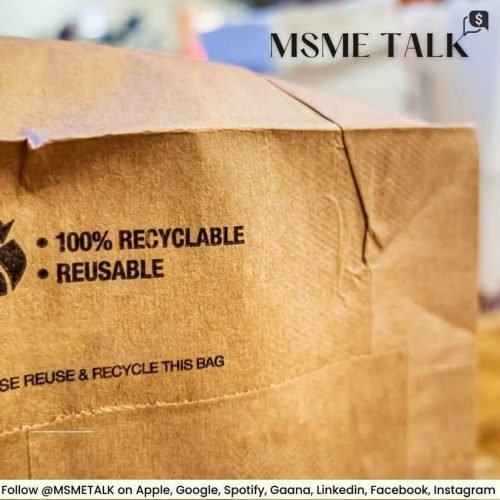
Biodegradable Packaging: Biodegradable materials can break down naturally and decompose into the environment without causing harm like plant-based plastics, bioplastic films, and compostable materials.
Compostable Packaging: Compostable packaging is designed to break down into organic matter that can be composted such as cornstarch, sugarcane bagasse, or wheat straw.
Renewable Materials: Packaging made from renewable resources, such as bamboo, hemp, or wood pulp, reduces the dependence on fossil fuels and helps mitigate environmental impact.
Minimalist Packaging or smart packaging: Minimalist packaging focuses on eliminating excess materials, using smaller packages, and optimizing space efficiency.
Simply using less material, regardless of what that material is, can work wonders, too.
Value engineering is the process of redesigning packaging from the ground up with the aim of saving money – and believe it or not, most money can be saved by using less packaging. That was the case of Raylo – a London-based start-up which optimised its packaging by using less material.

Reusable Packaging: Reusable packaging offers a more sustainable alternative to single-use packaging. Containers, bags, or boxes that can be reused multiple times help reduce waste and minimize the need for additional packaging.
Innovative packing resources: Researchers are constantly developing new materials with sustainable properties. For instance, mycelium packaging is made from the root structure of mushrooms, providing a biodegradable and renewable packaging solution.
Eco-Friendly Labels and Inks: Sustainable packaging also considers the materials used for labels and printing. Choosing eco-friendly inks and labels made from recycled or responsibly sourced materials further enhances the sustainability of packaging.
(If you are an Industry Expert and want to be a guest on MSMETALK Podcast, share more about yourself)
Remember, the suitability of each option depends on factors such as the product being packaged, transportation requirements, and end-user needs. It’s essential to evaluate the specific context and requirements when selecting sustainable packaging solutions.
How is sustainable packaging different from eco friendly packaging?
A point to be noted here is A fancy label that says ‘eco-friendly’ doesn’t mean that it’s sustainable. Similarly, labelling something as sustainable doesn’t mean that it’s ethical.
Sustainable: A company that implements renewable energy sources, uses recycled materials, and ensures fair labor practices in its supply chain, aiming to achieve long-term viability and balance economic, social, and environmental consideration
Example: A clothing brand that uses organic cotton, implements water-saving techniques in production, and provides fair wages and safe working conditions for its employees.
Eco-friendly: Emphasizes minimizing harm to the environment through practices that reduce pollution and resource consumption.
Example:A product that is made from recycled materials, uses minimal packaging, and is free from toxic chemicals, aiming to minimize its environmental impact.
Sustainable packaging is becoming a higher priority for both brands and consumers – more now than ever before.
Case studies related to Sustainable packaging:
Sustainable packaging is the use of packaging materials and design strategies that minimize the environmental impact throughout the entire life cycle, from production to disposal, while still meeting the functional requirements of protecting and delivering products.
You can also do this by designing your packaging with another purpose in mind.
For example, this shopping bag from H&M transforms into a clothes hanger.
(MSME TALK podcast is available across all major platforms like Apple Podcast, Spotify, Google Podcast, Gaana Podcast , Amazon Podcast, Jio Saavan)
H&M

(Do you think that searching hundreds of websites daily to find tenders for your company is kind of impossible? Then listen to MSME TALK’s exclusive Episode, Ep- 24 Bid Assist)
Monday’s Child
Monday’s Child is a British company, selling young girl’s clothing for special occasions.
Not only are these bags made from less material than H&M’s traditional plastic bag, but the paper is 80% recycled.
H&M knows its audience is people between 18 and 35. They know that these people care about the environment.
H&M know their customers appreciate brands with eco and reusable packaging solutions.Therefore, sustainable design with reusability in mind increases brand loyalty amongst their audience.

The packaging that Monday’s Child uses tackles sustainability from the other side. The box doubles as a doll’s house for its young users.
By adding extra value to the packaging, a customer gets more value for money. Reusing the box also extends the life of the packaging.
Brands offering sustainable packaging solutions!
The shift towards sustainable living, many brands are offering sustainable packaging solutions these days, let us have a look on few of those brands:
Ecoware
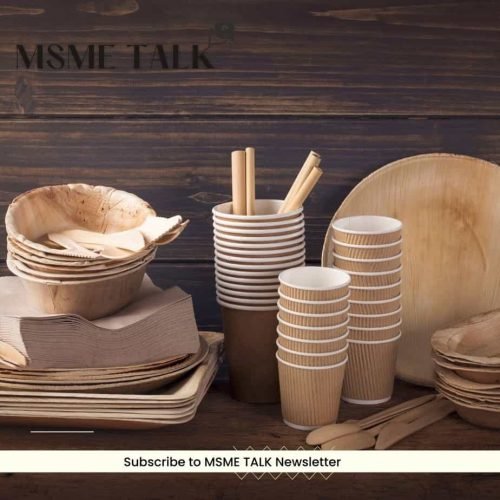
The packaging products by Delhi-based Ecoware are made from plant biomass, which is produced from plant residue. Further, no chemical or pesticide residue is used in the making process of the products. They offer boxes, cups, cutleries, bowls, plates, trays, boxes with lids and much more. Moreover, they also offer customized packaging for customers!
The Mend
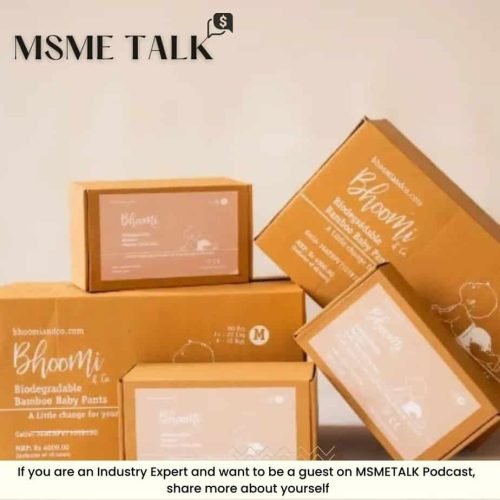
This sustainable packaging brand, The Mend, takes care of the environment by offering eco-friendly packaging and ensuring small-batch packaging. The Mumbai-based brand is known for using recycled biodegradable and compostable materials to create sustainable packaging products like boxes, bags and also offer packaging services.
(Subscribe for alerts to stay updated with launch of new podcast episodes and blogs about MSMEs & Startups)
Bambrew
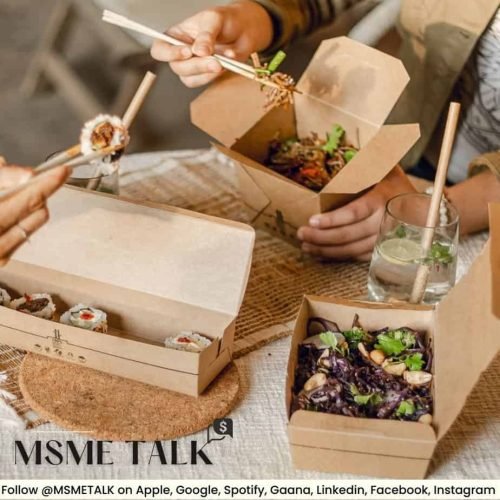
Bambrew, a Bengaluru based company could be your “natural packaging replacement” as they create packaging products with bamboo, sugarcane and seaweed. In addition, they also support the local tribes across the country and the environment while getting the products handmade by the tribals. Some of the popular products include boxes and cutlery..
(Follow MSME TALK podcast, where we bring experts from the Industry to give value addition guidance, to scaleup and build long lasting business)
Here are some data points related to sustainable packaging on a global scale:
Market Growth: The global sustainable packaging market is projected to reach a value of $440.3 billion by 2025, with a compound annual growth rate (CAGR) of 7.9% from 2020 to 2025 (Source: MarketsandMarkets).
Consumer Demand: Around 70% of consumers globally are willing to pay a premium for products packaged in sustainable materials (Source: GlobalWebIndex).
Plastic Waste Reduction: The implementation of sustainable packaging solutions could potentially reduce global plastic waste by approximately 78 million metric tons by 2040 (Source: McKinsey & Company).
Renewable Materials: The global market for renewable packaging materials is expected to reach $248.8 billion by 2026, with a CAGR of 6.9% from 2021 to 2026 (Source: Research and Markets).
Conclusion: The SMEs in India are witnessing a bright future in packaging industry. Factors such as the expanding consumer goods sector, the e-commerce revolution, the emphasis on sustainable packaging, the booming food and beverage industry, and the rapid growth of the pharmaceutical sector are driving the demand for innovative packaging solutions.
To succeed in this market, SMEs need to stay ahead of trends, develop sustainable options, and deliver packaging solutions that meet the evolving needs of consumers. As India’s economy continues to grow and consumer preferences evolve, the SMEs packaging market will continue to flourish, offering ample opportunities for businesses to thrive and contribute to the country’s economic growth.
(If you are in packaging Industry, do share about yourself. Selected clients will be covered in special stories by MSME TALK)
